Haydn Creation Vocal Score
.jpg) Vocal Scores for Haydn's Creation
Vocal Scores for Haydn's Creation
The Creation (German: Die Schöpfung) is considered to be Joseph Haydn's masterpiece written between 1797 and 1798.
The two most popular vocal scores for Haydn's Creation are shown below.
Rehearsal recordings to help learn your voice part (Soprano, Alto, Tenor, Bass) are described below.
Full Video Version to hear the work in full is also below
The old Novello edition of Haydn's Creation is in English for SATB.
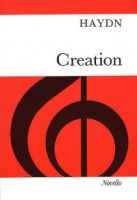
Catalogue Number:NOV070158
ISBN:9780853605058
Please click here if you wish to order and further vocal score information
Please order by 3pm to be despatched today
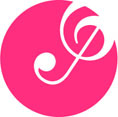
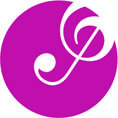

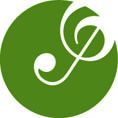
The Novello/Pilkington edition of Haydn's Creation is in English and German for SATB and Solo
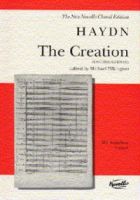
Catalogue Number:NOV072485
ISBN: 9780711984615
Please click here if you wish to order and further vocal score information
Please order by 3pm to be despatched today




Haydn was inspired to write a large oratorio during his visits to England in 1791–1792 and 1794–1795, when he heard oratorios of Handel performed by large forces. Israel in Egypt is believed to have been one of these. It is likely that Haydn wanted to try to achieve results of comparable weight, using the musical language of the mature classical style.
The work on the oratorio lasted from October 1796 to April 1798. It was also a profound act of faith for this deeply religious man, who appended the words "Praise to God" at the end of every completed composition. He later remarked, "I was never so devout as when I was at work on The Creation; I fell on my knees each day and begged God to give me the strength to finish the work." Haydn composed much of the work while at his residence in the Mariahilf suburb of Vienna, which is now the Haydnhaus. It was the longest time he had ever spent on a single composition. Explaining this, he wrote, "I spent much time over it because I expect it to last for a long time." In fact, he worked on the project to the point of exhaustion, and collapsed into a period of illness after conducting its premiere performance.
In 1801, Haydn reused some ideas from this oratorio for the Schöpfungsmesse.
Haydn's original autograph score has been lost since 1803. A Viennese published score dated 1800 forms the basis of most performances today. The 'most authentic' Tonkünstler-Societat score of 1799, with notes in the composer's hand, can be found at the Vienna State Library. There are various other copyist scores such as the Estate, as well as hybrid editions prepared by scholars during the last two centuries.
The Creation is written in three parts, whose musical numbers are given below. As in other oratorios, the larger musical numbers (arias and choruses) are often prefaced with a brief recitative; here, the recitative gives the actual words of Genesis, while the following number elaborates the bare Biblical narrative in verse.
Part I celebrates the creation of the primal light, the Earth, the heavenly bodies, bodies of water, weather, and plant life.
Prelude. Die Vorstellung des Chaos (The Representation of Chaos)
One of the most famous numbers in the work, an overture in C minor in slow tempo, written in sonata form. Haydn depicts Chaos by withholding musical cadences from the ends of phrases.
No. 1. Im Anfange schuf Gott Himmel und Erde (In the beginning God created Heaven and Earth)
This movement relates the words of Genesis 1:1–4. It begins with a recitative for bass solo in C minor, followed by choral presentation of the creation of light. The latter is depicted first with a soft pizzicato note from the strings, followed by a sudden surprise fortissimo C major chord on the word Licht (Light).
This moment created a sensation at the public premiere of the work in Vienna. According to a friend of the composer:
at that moment when light broke out for the first time, one would have said that rays darted from the composer's burning eyes. The enchantment of the electrified Viennese was so general that the orchestra could not proceed for some minutes.
Audiences today generally let the moment speak for itself.
Following the appearance of light is a brief tenor recitative on the words "and God saw the light, that it was good", leading into:
No. 2. Nun schwanden vor dem heiligen Strahle (Now vanished by the holy beams)
Aria for tenor with chorus in A major, portraying the defeat of Satan's host, from Paradise Lost.
End of the first day.
No. 3. Und Gott machte das Firmament (And God made the firmament)
Long recitative for bass in C major. The bass part first gives the words of Genesis 1:6-7, then follows orchestral tone painting, describing the division of the waters from the land and the first storms.
No. 4. Mit Staunen sieht das Wunderwerk (The marv'lous work beholds amazed/The glorious hierarchy of heav'n)
Soprano solo with chorus, in C major. The heavenly hosts praise God and the work of the second day.
End of the second day.
No. 5. Und Gott sprach: Es sammle sich das Wasser (And God said let the waters)
Brief recitative for bass (Genesis 1:9–10), leading into:
No. 6. Rollend in schaumenden Wellen (Rolling in foaming billows)
Aria in D minor for bass, narrating the creation of seas, mountains, rivers, and (a coda in D major) brooks. As John Mangum points out, the stylistic inspiration here appears to be the "revenge aria" of 18th century opera buffa, as for instance in "La vendetta", from Mozart's The Marriage of Figaro.
No. 7. Und Gott sprach: Es bringe die Erde Gras hervor (And God said, Let all the earth bring forth grass)
Brief recitative for soprano (Genesis 1:11), leading into:
No. 8. Nun beut die Flur das frische Grün (Now robed in cool refreshing green)
Solo aria in B flat major for soprano, in siciliana rhythm, celebrating the creation of plants.
No. 9. Und die himmlischen Heerscharen verkündigten (And the Heavenly host proclaimed the third day)
Brief recitative for tenor, leading into:
No. 10. Stimmt an die Saiten (Awake the harp)
Chorus celebrating the third day, with four-part fugue on the words "For the heavens and earth/He has clothed in stately dress".
End of the third day.
No. 11. Und Gott sprach: Es sei'n Lichter an der Feste des Himmels (And God said : Let there be lights in the firmament of heaven)
Recitative for tenor, with portions of Genesis 1:14–16.
No. 12. In vollem Glanze steiget jetzt die Sonne (In splendour bright is rising now/the sun)
With tenor narration, the orchestra portrays a brilliant sunrise, then a languid moonrise. The tune of the sunrise is simply ten notes of the D major scale, variously harmonized; the moon rises in the subdominant key of G, also with a rising scale passage. The end of recitative briefly alludes to the new-created stars, then introduces:
No. 13. Die Himmel erzählen die Ehre Gottes (The heavens are telling the glory of God)
The mightiest of the choruses of The Creation and a popular favorite. Haydn's century, following on the discoveries of Newton, had the view that an orderly universe—particularly the mathematically-governed motion of the heavenly bodies—attests to divine wisdom. Haydn, a naturally curious man, may have had an amateur interest in astronomy, as while in England he took the trouble to visit William Herschel, ex-composer and discoverer of Uranus, in his observatory in Slough.
"Die Himmel erzählen" is not in the home key of Part I, C minor, but is instead in C major, showing the triumph of light over dark. It begins with alternation between celebratory choral passages and more meditative sequences from the three vocal soloists, followed by a choral fugue on the words "Und seiner hände Werk zeigt an das Firmament", then a final homophonic section. ("The wonder of his works displays the firmament" is the English text here, with word-order calqued from the German, but somewhat awkward compared to the Authorized Version's "And the firmament sheweth the handywork of God".) The unusual intensity of the ending may be result of Haydn's piling of coda upon coda, each occurring at a point where the music seems about to end.
End of the fourth day.
Part II celebrates the creation of sea creatures, birds, animals, and lastly, man.
No. 14. Und Gott sprach: Es bringe das Wasser in der Fülle hervor (And God said : Let the waters bring forth in plenty)
Recitative for soprano (Genesis 1:20), leading into:
No. 15. Auf starkem Fittige schwinget sich der Adler stolz (On mighty wings the eagle proudly soars aloft)
Plum aria for soprano in F major, celebrating the creation of birds. The species mentioned are the eagle, the lark, the dove and the nightingale. The lyrics include the conceit that, at the time just after the Creation, the nightingale's song was not melancholy.
No. 16. Und Gott schuf große Walfische (And God created great whales.)
For bass solo, in D minor. While labeled a recitative in the score, it is more appropriately described as a recitative (from Genesis 1:21–22) followed by a very brief aria, the latter a verse paraphrase on the biblical words (Gen. 1:22) "Be fruitful and multiply." The bass sings in the voice of the Almighty, as quoted by the Archangel Raphael. The somber accompaniment uses no violins, but only the lower strings, with divided violas and cellos. For discussion of how this section was composed, see Gottfried van Swieten.
No. 17. Und die Engel rührten ihr' unsterblichen Harfen (And the angels struck their immortal harps.)
Brief recitative for bass, with notable harp imitations in the accompaniment, leading into:
No. 18. In holder Anmut stehn (In fairest raiment)
Haydn breaks the regularity of the pattern "Recitative–Elaboration for solo–Celebratory chorus" with a meditative work in A major for the trio of vocalists, contemplating the beauty and immensity of the newly created world. This leads without a break to:
No. 19. Der Herr ist groß in seiner Macht (The Lord is great in his might)
Chorus with all three soloists, in A major, celebrating the fifth day. The line "...und ewig bleibt sein ruhm" is, appropriately, repeated over and over again, seemingly without end.
End of the fifth day
No. 20. Und Gott sprach: Es bringe die Erde hervor lebende Geschöpfe (And God said : Let earth bring forth the living creature)
Recitative for bass (Genesis 1:24), leading into:
No. 21. Gleich öffnet sich der Erde Schoß (At once Earth opens her womb)
A movement of tone-painting with bass narration. Haydn's gentle sense of humor is indulged here as the newly created creatures appear, each with musical illustration: lion, tiger, stag, horse, cattle, sheep, insects, and worms. As always in Haydn's oratorio tone-painting, the sung verbal explanation comes after the orchestral portrayal.
The transition from glamorous animals (the first four) to prosaic ones (the last four) is marked with an unprepared modulation from D flat to A major. The farm animals are portrayed (as in No. 8) with siciliana rhythm, which plainly had bucolic associations for Haydn. Basses who have a strong low D are often tempted to use it on the final note "Wurm", substituting for the D an octave lower than written by Haydn.
No. 22. Nun scheint in vollem Glanze der Himmel (Now shines heaven in the brightest glory)
Aria for bass in D major, in 3/4 time. The theme is
Doch war noch alles nicht vollbracht
Dem Ganzen fehlte das Geschöpf
Das Gottes Werke dankbar seh'n
Des Herren Güte preisen soll.
"Yet not all was complete,
The whole lacked a being
Who would behold God's work with thanks
And praise the Lord's goodness."
Thus the movement is preparatory to the creation of man.
The first part of the movement contains another brief but notable bit of tone-painting: a fortissimo bottom B-flat (sounding in octaves) for bassoons and contrabassoon accompanying the last word of the line, "By heavy beasts the ground is trod."
No. 23. Und Gott schuf den Menschen (And God created Man)
Tenor recitative (Genesis 1:27, 2:7), leading to:
No. 24. Mit Würd' und Hoheit angetan (In native worth and honor clad)
A prized aria for tenor, in C major, celebrating the creation of man, then woman. Often sung outside the context of The Creation. Although the aria relates a Biblical story, the virtues attributed to Adam (and not Eve) clearly reflect the values of the Enlightenment.
This was almost certainly the last music from The Creation that Haydn ever heard: it was sung for him several days before his death in 1809 as a gesture of respect by a French military officer, a member of Napoleon's invading army.
No. 25. Und Gott sah jedes Ding (And God saw every thing)
Brief recitative for bass (text amplifying Genesis 1:31), leading to:
No. 26. Vollendet ist das große Werk (The great work is complete)
A celebration for chorus alone, in B flat, of the sixth day.
No. 27. Zu dir, o Herr, blickt alles auf (All look up to thee, O Lord)
Another meditation for the three angels (compare No. 18), in E flat major, on God's omnipotence and mercy, quoting Psalm 145:15–16. The bass solo line "Du wendest ab dein Angesicht" requires the singer to terrify the audience with barely-audible pianissimo. The end of the trio is followed without pause by...
No. 28. Vollendet ist das große Werk (Fulfilled at last the great work)
This chorus begins with the same music and words as No. 26, and is in the same key of B flat. It quickly moves into large double fugue on the words "Alles lobe seinen Namen, denn er allein ist hoch erhaben" ("Let all praise his name, for he alone is sublime"). As appropriate to the finale of Part II, this repeat chorus is longer and ends more intensely than the first.
The pattern of the last three numbers of Part II, with two celebratory movements on the same theme flanking a slower meditative movement, echoes countless settings of the Latin Mass, where similar or identical choruses on "Hosanna in excelsis" ("Hosanna in the highest") flank a meditative section on "Benedictus qui venit in nomine Domini" ("Blessed is he that comes in the name of the Lord.")
Part III takes place in the Garden of Eden, and narrates the happy first hours of Adam and Eve.
No. 29. Aus Rosenwolken bricht (In rosy mantle appears)
Orchestral prelude in slow tempo depicting dawn in the Garden of Eden, followed by recitative for tenor representing Uriel. Adam and Eve are seen walking hand in hand.
The key is E major, very remote from the flat-side keys that have dominated the work so far. Various commentators suggest that this was meant by Haydn to convey the remoteness of Earth from Heaven, or to contrast the sinfulness of people with the perfection of angels.
No. 30. Von deiner Güt, o Herr und Gott (By thy goodness, O bounteous Lord)
Adam and Eve offer a prayer of thanks in C major, accompanied by a chorus of angels.
This movement, the longest in The Creation, has three parts. In the first, marked adagio, Adam and Eve sing their prayer, with the chorus singing underneath them accompanied by soft timpani rolls. In the second section, the tempo picks up, and Adam, Eve, and the angels praise the newly created world. The final section is for chorus and orchestra alone, a celebration on the words "Wir preisen dich in Ewigkeit" ("We praise thee eternally").
No. 31. Nun ist die erste Pflicht erfüllt (Our first duty we have now performed)
Recitative for Adam and Eve, leading to:
No. 32. Holde Gattin, dir zur Seite (Sweet companion, at thy side)
Love duet for Adam and Eve in E flat major. There is a slow initial section, followed by an Allegro. The style is clearly influenced by opera, and some commentators invoke a parallel between Adam and Eve and the characters Papageno and Papagena, from Mozart's Die Zauberflöte.
No. 33. O glücklich Paar, und glücklich immerfort (O happy pair, and ever happy henceforth)
Uriel briefly explains to the pair that they will be happy always if they will refrain from wanting to have, or wishing to know, more than they should. This is the only reference to the fall of humanity.
No. 34. Singt dem Herren alle Stimmen! (Sing the Lord, ye voices all)
Final chorus in B flat major. There is a slow introduction, followed by a double fugue on the words "Des Herren Ruhm, er bleibt in Ewigkeit" ("The praise of the Lord will endure forever"), with passages for the vocal soloists and a final homophonic section.
For further information of Haydn's Creation, please click here to visit the Wikipedia website




ChoraLine 'Voice Part' Rehearsal CDs & EasyPlay (Stream & Download)
Quick and Easy way to memorise your vocal line and practise between choir rehearsals

Know Your Notes Perfectly
Enhance Your Enjoyment when Singing
Learn With The Music
Shine In Your Choir
Sing With Confidence
Please click here to hear a ChoraLine sample for Creation








